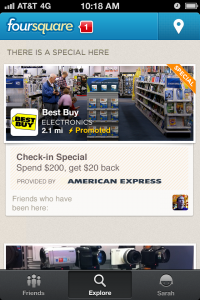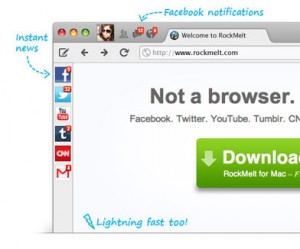
Do you know about Klout? It’s a company that purports to measure your influence online, based on your activity on Twitter, Foursquare, Facebook, Google+, etc. Klout then assigns users a score from 1 – 100 – the higher the score, the more influential you are. Supposedly, anyway. And in theory it would make sense to want a higher Klout score, right? After all, influence means people listen to you, and that’s helpful for all kinds of things.
But does Klout actually measure influence? Well, it’s hard to say. A large part of your Klout score is based on how active you are on social networks, which is important, but certainly not indicative of the quality of your participation, or how knowledgeable (aka influential) you actually are. After all, lots of retweets may take time, but it doesn’t necessarily take a lot of expertise. Klout also says that the number of networks you have connected to the service also determines your influence, so presumably Klout believes that doing a lot of social networking in a lot of places is a synonym for how important you are. It’s hard to say, really, whether there’s any validity to the Klout algorithm, since it’s secret. They’ve announced plans to make it more transparent, but we’ll have to wait and see.
What we can see is some glaring anecdotal evidence is that something is just not right with Klout. The TechCrunch writer with the same score as founder and industry tital Mike Arrington. At one point Tim Berners-Lee, the creator of the World Wide Web, had a score in the low 70s. Spam bots have been known to have higher scores than humans. There’s something about real-world influence that’s obviously not being translated to their algorithm. And even a few days away from the social media machine will cause your score to drop – but certainly a vacation doesn’t mean you’ve lost any actual influence or knowledge in the real world. So really then what Klout measures is how good you are at socializing in a way that’s good for your Klout score. Read More
 Foursquare is going back to school in a big way! When doing your back to school shopping, be sure to check in and see if you qualify for any offers at the store you’re shopping at. Tons of retailers have lined up to offer discounts to students who check-in for their back-to-school shopping, from clothing to supplies to tech. Using Foursquare’s “Explore” feature is the best way to find deals at retailers near you. In New York City, for example, I found deals at H&M, the Gap, Bed Bath & Beyond and Old Navy. These deals are different depending on where you are, so be sure to search and see what offers exist in your neighborhood! Here are a few examples of current national back to school deals:
Foursquare is going back to school in a big way! When doing your back to school shopping, be sure to check in and see if you qualify for any offers at the store you’re shopping at. Tons of retailers have lined up to offer discounts to students who check-in for their back-to-school shopping, from clothing to supplies to tech. Using Foursquare’s “Explore” feature is the best way to find deals at retailers near you. In New York City, for example, I found deals at H&M, the Gap, Bed Bath & Beyond and Old Navy. These deals are different depending on where you are, so be sure to search and see what offers exist in your neighborhood! Here are a few examples of current national back to school deals:






 I’ve spent just about my entire life being the fat kid. Numerous crash diets, exercise regimens and scams have been tried over the years from the plausible to the ridiculous. I remember in 9th grade I tried eating nothing but sugar free jello for three weeks. That didn’t work out. In college I tried Atkins, and while I lost a bit of weight, the SAE house with its chicken wings,
I’ve spent just about my entire life being the fat kid. Numerous crash diets, exercise regimens and scams have been tried over the years from the plausible to the ridiculous. I remember in 9th grade I tried eating nothing but sugar free jello for three weeks. That didn’t work out. In college I tried Atkins, and while I lost a bit of weight, the SAE house with its chicken wings, 